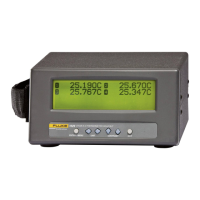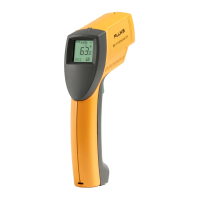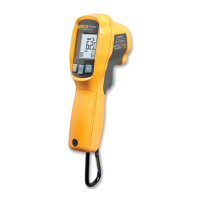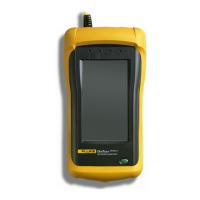7.2.1 Setting the Address
The IEEE-488 bus requires that each device has a unique address. The default
address of the 1502A is 22 but can be changed if necessary. The IEEE-488 ad
-
dress of the 1502A is set within the Comm menu after the serial linefeed pa
-
rameter. (This menu option will not appear if the IEEE-488 interface is not
installed). Press the Menu button (“SEt?” appears) then press the Comm but
-
ton. The display will briefly indicate “SErIAL”, then “bAUd” and then display
the current baud rate. Press Enter several times until “IEEE”appears.Thedis
-
play will briefly indicate “AddreSS” and then display the current IEEE-488
address. Use the U and D buttons to change the number then press Enter.
7.2.2 Setting the Termination Character
The 1502A will normally terminate transmissions from the IEEE-488 port with
a linefeed (newline) character. Some systems may require a terminating car
-
riage return instead. The termination character can be changed if necessary. The
termination character is set within the Comm menu after the IEEE-488 address
parameter. (This menu option will not appear if the IEEE-488 interface is not
installed). The display will briefly indicate “EOS” (end of string) and then dis-
play the current setting. Use the U and D buttons to change the termination
character then press Enter.
7.2.3 Time Stamp
Measurement data read from the GPIB interface can be stamped with the
time-of-day. For instructions on setting the time stamp and system clock see
Section 7.1.3 above.
7.3 Remote Commands
ASCII commands are used to instruct the 1502A to perform certain actions. Ta
-
ble 6 provides a complete list of commands. These commands can be used with
either the RS-232 or IEEE-488 interface. All commands sent to the 1502A
must be terminated with a carriage return or linefeed. Either upper or lower
case letters are accepted. Commands used to set a parameter are issued with the
command header, an “=“ character, and the parameter value. For example,
U=C<EOS> sets the units to Celsius. (The symbol <EOS> represents the termi
-
nation character.) Commands used to request data are issued with only the
command header. For example, T<EOS> causes the 1502A to return the most
recent measurement. Basic operations using commands are explained in the fol
-
lowing sub-sections.
7.3.1 Measurement Commands
The following commands relate to reading measurement data.
1502A Thermometer Readout
User’s Guide
26
